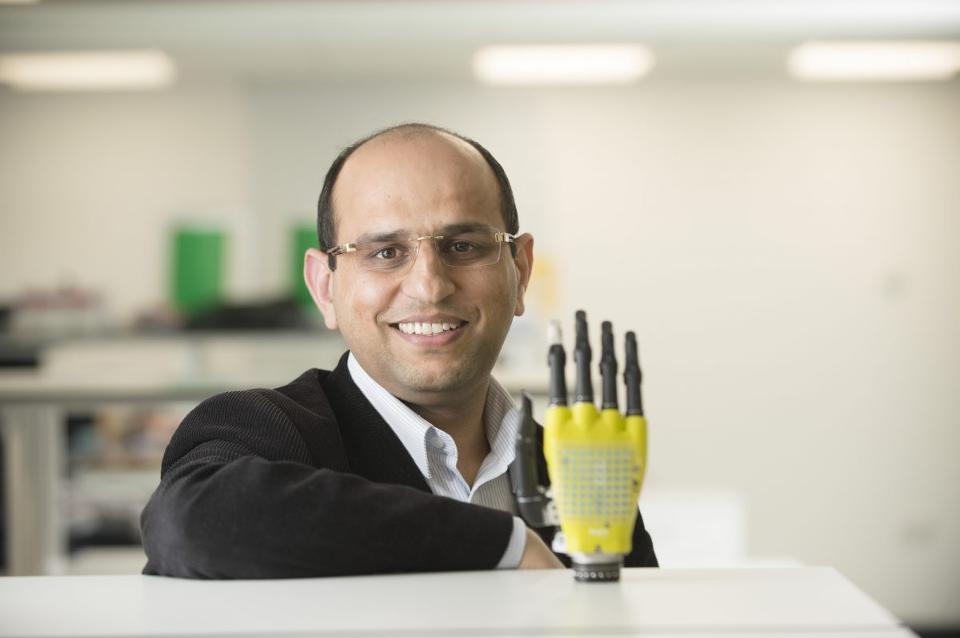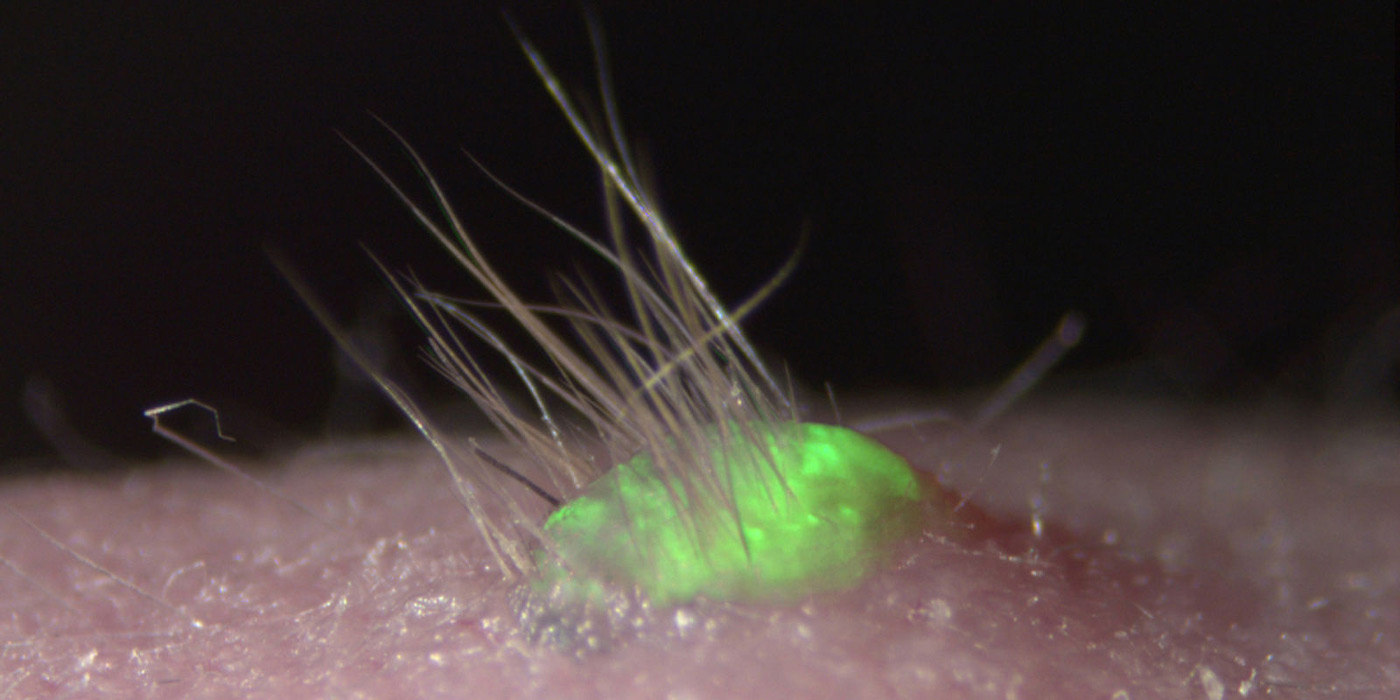
The verdict's still out on whether or not androids dream of electric sheep. But their ability to feel? Well, that's about to approach levels of human sensitivity. We're of course talking about the sense of touch, not emotions. And thanks to work out of Georgia Tech, tactile sensitivity for robotics, more secure e-signatures and general human-machine interaction is about to get a great 'ol boost. Through the use of thousands of piezotronic transistors (i.e., grouped vertical zinc oxide nanowires) known as "taxels," a three-person team led by Prof. Zhong Lin Wang has devised a way to translate motion into electronic signals. In other words, you're looking at a future in which robotic hands interpret the nuances of a surface or gripped object akin to a human fingertip and artificial skin senses touch similar to the way tiny hairs on an arm do.
What's more, the tech has use outside of robotics and can even be levereged for more secure e-signature verification based on speed and pressure of a user's handwriting. And the best part? These sensors can be manufactured on transparent and flexible substrates like the one pictured above, which allows for various real-world applications -- just use your imagination. Pretty soon, even robots will have the pleasure of enjoying the touch... the feel of cotton and maybe even hum that jingle to themselves, too.
Filed under: Science, Alt
Comments
Via: MIT Technology Review
Source: Georgia Tech, Science
 Artificial skin stands to have a variety uses, with potential applications in everything from robots to prosthetics. And in recent years, researchers have been able to instill sensory perception, like touch and pressure, into artificial skin. However...
Artificial skin stands to have a variety uses, with potential applications in everything from robots to prosthetics. And in recent years, researchers have been able to instill sensory perception, like touch and pressure, into artificial skin. However...
 Artificial skin stands to have a variety uses, with potential applications in everything from robots to prosthetics. And in recent years, researchers have been able to instill sensory perception, like touch and pressure, into artificial skin. However...
Artificial skin stands to have a variety uses, with potential applications in everything from robots to prosthetics. And in recent years, researchers have been able to instill sensory perception, like touch and pressure, into artificial skin. However...
 Researchers at Glasgow University have successfully developed a new type of artificial skin that is more sensitive than our own. Made of just a single atomic layer of graphene, the new soft feeling epidermis functions as its own sophisticated touch s...
Researchers at Glasgow University have successfully developed a new type of artificial skin that is more sensitive than our own. Made of just a single atomic layer of graphene, the new soft feeling epidermis functions as its own sophisticated touch s...
 Today on In Case You Missed It: Roboticists from China created an artificial skin for robots that simulate hair with glass-shrouded microwires. A gripper hand with the 'hair' on it's skin was able to feel when an object was slipping because of...
Today on In Case You Missed It: Roboticists from China created an artificial skin for robots that simulate hair with glass-shrouded microwires. A gripper hand with the 'hair' on it's skin was able to feel when an object was slipping because of...
 You've probably seen artificial skin before, but never has it been quite so... accurate. Japanese researchers have grown skin tissue that not only includes hair follicles, but all the glands that come with it -- including oil and sweat glands. The...
You've probably seen artificial skin before, but never has it been quite so... accurate. Japanese researchers have grown skin tissue that not only includes hair follicles, but all the glands that come with it -- including oil and sweat glands. The...
 Researchers from Cornell University have developed a potential skin material that lights up and stretches to more than six times its original size. The so-called hyper-elastic, light-emitting capacitors (HLECs) are made from transparent hydrogel elec...
Researchers from Cornell University have developed a potential skin material that lights up and stretches to more than six times its original size. The so-called hyper-elastic, light-emitting capacitors (HLECs) are made from transparent hydrogel elec...
 A team from Stanford University might have made a breakthrough that could change the lives of people with missing limbs. Researchers have developed an artificial substitute for skin that is capable of sensing when it is being touched and sending th...
A team from Stanford University might have made a breakthrough that could change the lives of people with missing limbs. Researchers have developed an artificial substitute for skin that is capable of sensing when it is being touched and sending th...
